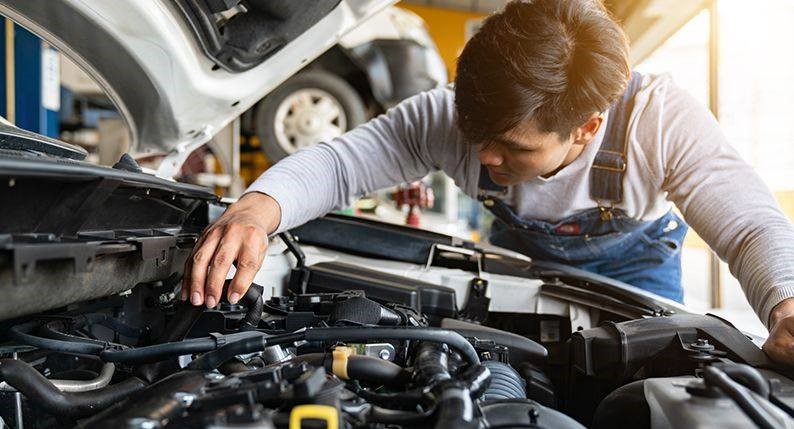
Over the years, makers have continually pushed the envelope, presenting brand-new modern technologies and safety and security attributes created to shield drivers, travelers, and pedestrians alike. From the very first seatbelt to sophisticated driver-assistance systems (ADAS), let's take an appearance at the advancement of auto safety attributes and just how they've changed the driving experience.

The Very Early Days: Seat Belts and Collision Protection. One of the most considerable early developments in automobile safety and security was the creation of the seatbelt. Prior to this, cars had easy lap belts or no seatbelt at all, leaving guests prone in the occasion of a collision.
In the 1960s and 1970s, cars and trucks also began to feature crumple areas-- locations of the automobile created to absorb impact energy in a crash-- more enhancing collision security for travelers. These enhancements, together with the intro of airbags in the late 1980s, laid the structure for the security systems we consider granted today.
The 1990s and Very early 2000s: Airbags and Anti-lock Brakes. By the 1990s, air bags ended up being a conventional attribute in many cars. Airbags were designed for the chauffeur and front passenger, however by the very early 2000s, side-impact air bags, drape airbags, and knee airbags were presented, offering more thorough security. These airbags, coupled with seat belts, ended up being the cornerstone of easy safety and security attributes, decreasing the danger of injury during a collision.
Anti-lock stopping systems (ABS) additionally became typical in the 1990s. Abdominal muscle helps protect against the wheels from securing throughout heavy braking, keeping guiding control and reducing the opportunities of a crash. This modern technology has actually because been fine-tuned, with systems like digital stability control (ESC) making it simpler for chauffeurs to preserve control in unsafe or dangerous problems.
The 2010s: Vehicle Driver Aid Technologies. The 2010s saw a surge in the advancement of energetic security modern technologies, which aim to avoid mishaps prior to they take place. Functions like lane separation warning, adaptive cruise ship control, and blind-spot surveillance began to show up in even more and a lot more vehicles. These systems make use of sensing units, cameras, and radar to spot possible dangers and advise drivers, or sometimes, take rehabilitative activities like steering the vehicle back into its lane or using the brakes to avoid a collision.
Among one of the most crucial innovations in this age was the introduction of automated emergency situation braking (AEB), which can identify an approaching crash and use the brakes if the motorist doesn't act in time. This technology has already been verified to reduce rear-end accidents significantly.
The 2020s and Beyond: Autonomous Vehicles and AI Integration. As we move into the 2020s, the future of automotive security is much more interesting. With innovations in synthetic intelligence (AI) and artificial intelligence, contemporary lorries are coming to be more familiar with their environments and efficient in choosing to avoid mishaps. The advancement of independent automobiles-- automobiles that can drive themselves without human intervention-- is on the perspective, with firms like Tesla, Waymo, and others leading the charge.
Also today, we see functions like automated parking, pedestrian discovery, and accident avoidance becoming more usual. These features depend on a selection of sensors, cams, and AI formulas to develop an extra linked, intelligent security system that continuously adapts to the setting around the vehicle.
In addition, vehicle-to-vehicle (V2V) communication is being checked out, where cars and trucks can "chat" per various other to share data on road problems, web traffic, and prospective hazards. This innovation might additionally decrease crashes and boost traffic circulation, providing an extra layer of security to contemporary vehicle drivers.
Conclusion: A More Secure Future for All. The evolution of automotive security features has significantly enhanced the security and health of drivers and travelers alike. From the humble seatbelt to the sophisticated vehicle driver assistance systems of today, each new technical jump has been driven by a need to minimize crashes and save lives. As autonomous modern technology and AI proceed to advance, we can only anticipate additional innovations that will certainly make driving much safer, smarter, and much more secure for everybody on the road. The future of vehicle security is brilliant, and as these technologies continue to development, we can expect a globe where vehicle-related injuries and fatalities are significantly decreased.
Navigation
Latest Posts
Choosing the Top Ford Trail-Ready Cars
Varsity Lincoln: Redefining Luxury Vehicles
Efficiency and Design: The New Cadillac V-Series Cars